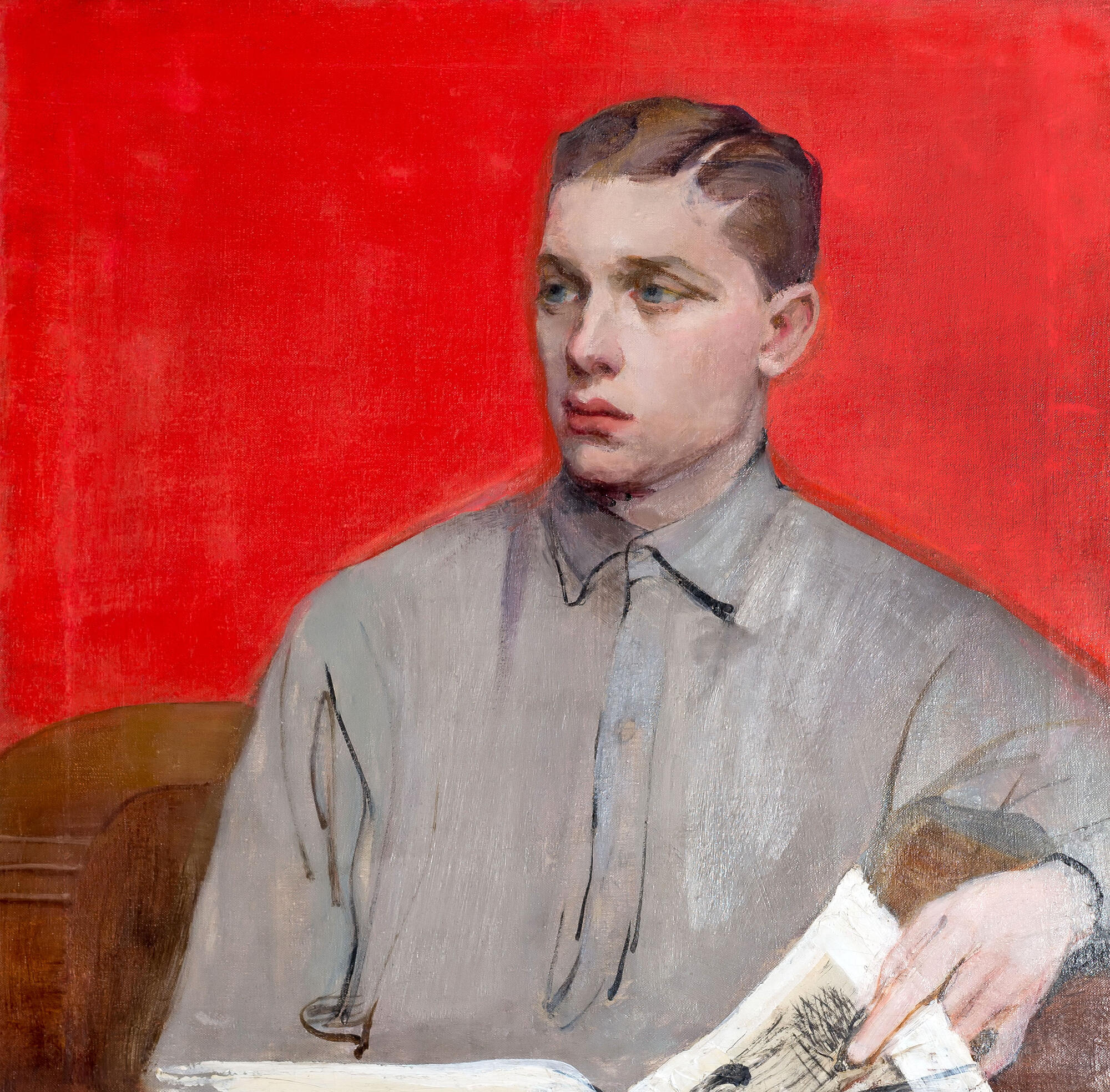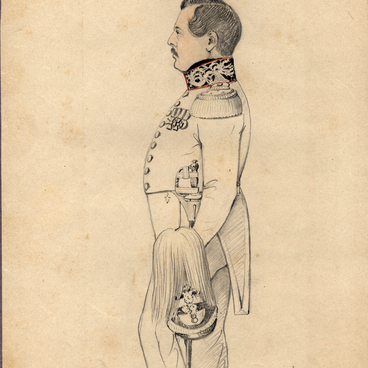The portrait of the great-grandson of Yevgeniy Boratynskiy was painted in 1916 by Kazan artist Nadezhda Sapozhnikova. She was a student and muse of the famous painter Nikolai Feshin and in many ways she followed his style - including this work.
Alexander Boratynskiy (who lived from 1899 to 1919) was also a talented artist and musician. He studied painting with Alexander Fomin, a friend of Feshin, and was part of the circle of artists assembled in the workshop of Nadezhda Sapozhnikova. Contemporaries recall that the young man was a gifted musician - directed the choir that sang in the Krupennikovskaya Family Church.
His personality made an indelible impression on others. His sister Olga Ilyina-Boratynskaya writes about him in the novel ‘The Dawn of the Eighth Day’: ‘The very thing that was the essence of Alec could not be put into words. Other people could be described through their words and their actions. But not Alec. The ambiguousness that was felt in him, perhaps, could be conveyed by a melody, by some particular rhythm or symbolism. Not in words’.
The portrait of Alec is one of the best works of Sapozhnikova, where several things came together: the school of drawing of Nikolai Feshin and the individual features of her artistic style, as well as the tragic anticipation of what’s coming.
The history of this portrait is mentioned in the memoirs of Alec’s aunt, Ksenia Alekseeva-Boratynskaya: ‘Sapozhnikova gave us a beautiful portrait of him with a red background (him in a grey shirt). She wrote it as early as the 16th year, when everything was peaceful. Nadezhda Mikhailovna then had a group of artists that met two or three times a week. Alec was a member of this club. When Nadezhda Mikhailovna showed this portrait to Sasha (A. Boratynskiy - Alec’s father - prima reds), he was disturbed by the red background. He feared everything red after Nadia, his wife, died of scarlet fever’.
Alec died in 1919. In 1918 he left from the first year of Kazan University as a volunteer in the White Army, which was retreating to the east. A year later, he writes in his diary: “People died here in Siberia, seeing nothing but cold and wounds. What will be their reward, Lord? They will break through the black skies and go to where they were children, and for us there will be an eternal Siberian night with endless white fields and with the same endless white longing.
Alec went missing in action in the Battle of Ufa, but his portrait, which was given to the museum in 1977, revealed the date of his death. The inscription made by the hand of Nadezhda Sapozhnikova on the back of the canvas under the layers that accumulated over time read: “31 May 31,1919”.
Alexander Boratynskiy (who lived from 1899 to 1919) was also a talented artist and musician. He studied painting with Alexander Fomin, a friend of Feshin, and was part of the circle of artists assembled in the workshop of Nadezhda Sapozhnikova. Contemporaries recall that the young man was a gifted musician - directed the choir that sang in the Krupennikovskaya Family Church.
His personality made an indelible impression on others. His sister Olga Ilyina-Boratynskaya writes about him in the novel ‘The Dawn of the Eighth Day’: ‘The very thing that was the essence of Alec could not be put into words. Other people could be described through their words and their actions. But not Alec. The ambiguousness that was felt in him, perhaps, could be conveyed by a melody, by some particular rhythm or symbolism. Not in words’.
The portrait of Alec is one of the best works of Sapozhnikova, where several things came together: the school of drawing of Nikolai Feshin and the individual features of her artistic style, as well as the tragic anticipation of what’s coming.
The history of this portrait is mentioned in the memoirs of Alec’s aunt, Ksenia Alekseeva-Boratynskaya: ‘Sapozhnikova gave us a beautiful portrait of him with a red background (him in a grey shirt). She wrote it as early as the 16th year, when everything was peaceful. Nadezhda Mikhailovna then had a group of artists that met two or three times a week. Alec was a member of this club. When Nadezhda Mikhailovna showed this portrait to Sasha (A. Boratynskiy - Alec’s father - prima reds), he was disturbed by the red background. He feared everything red after Nadia, his wife, died of scarlet fever’.
Alec died in 1919. In 1918 he left from the first year of Kazan University as a volunteer in the White Army, which was retreating to the east. A year later, he writes in his diary: “People died here in Siberia, seeing nothing but cold and wounds. What will be their reward, Lord? They will break through the black skies and go to where they were children, and for us there will be an eternal Siberian night with endless white fields and with the same endless white longing.
Alec went missing in action in the Battle of Ufa, but his portrait, which was given to the museum in 1977, revealed the date of his death. The inscription made by the hand of Nadezhda Sapozhnikova on the back of the canvas under the layers that accumulated over time read: “31 May 31,1919”.



